
Semi Electric Hospital Bed vs Full Electric: Pros and Cons for Caregivers
KEY TAKEAWAYS
| Feature | Semi-Electric Beds | Full Electric Beds |
|---|---|---|
| Price Range | $900-$1,500 | $1,200-$3,000+ |
| Height Adjustment | Manual crank | Electric motor |
| Head/Foot Adjustment | Electric motors | Electric motors |
| Caregiver Physical Effort | Moderate (for height changes) | Minimal |
| Power Outage Function | Manual backup for height | Depends on battery backup |
| Maintenance Needs | Lower (fewer motors) | Higher (more motors) |
| Weight Capacity | 350-450 lbs typically | 350-600+ lbs available |
| Best For | Budget-conscious, occasional height changes | Frequent adjustments, caregiver strain concerns |
Best for Most Caregivers: Costcare Full Electric Hospital Bed B135C – Complete electric functionality at moderate price point ($1,298)
Budget-Friendly Option: Costcare Semi-Electric Bed B120C – Essential electric features at $1,068
Premium Option: Icare Adjustable Electric Home Hospital Bed IC333 – Advanced features with home-friendly design ($3,200)
 Costcare Full Electric Hospital Bed B135C - $1,298
Costcare Full Electric Hospital Bed B135C - $1,298
- Fully motorized height adjustment reduces caregiver back strain
- Electric head and foot controls for optimal patient positioning
- User-friendly remote with simple, intuitive interface
- Durable frame construction supports up to 450 lbs
- Locking casters for stability during transfers and care
Choosing between a semi-electric and full electric hospital bed is one of the most important decisions caregivers face when setting up a home care environment. While both options provide essential medical functionality, they differ significantly in operation, convenience, and suitability for different caregiving situations.
After extensive research and consulting with caregivers, the Costcare Full Electric Hospital Bed B135C stands out as the best overall choice for most caregiving situations. While it costs more than semi-electric alternatives, the elimination of manual cranking for height adjustments significantly reduces caregiver strain and simplifies daily care routines.
In this comprehensive comparison, we'll examine the key differences between semi-electric and full electric hospital beds, helping caregivers understand which option best suits their specific needs, physical capabilities, and budget considerations.
Key Functional Differences Between Semi-Electric and Full Electric Hospital Beds
Understanding the fundamental operational differences between these bed types is essential for making an informed decision.
Basic Functionality and Operation
 Costcare Semi-Electric Bed B120C - $1,068
Costcare Semi-Electric Bed B120C - $1,068
- Electric head and foot adjustments via remote control
- Manual crank for height changes requires physical effort
- Lower initial cost than full electric alternatives
- Fewer electrical components means potentially fewer repairs
- Manual height adjustment works during power outages
Semi-electric hospital beds provide a hybrid approach to bed adjustments:
- Electric motors control head and foot positioning via remote
- Manual hand crank adjusts bed height (typically located at foot of bed)
- Requires physical effort from caregivers for height changes
- Usually includes one electric motor for both head/foot functions
The Costcare Semi-Electric Bed B120C exemplifies this hybrid functionality at a budget-friendly price point of $1,068, making it an accessible option for many home care situations.
Full electric hospital beds offer complete motorized control:
- Electric motors handle all adjustments (head, foot, and height)
- No manual cranking required for any function
- Remote control operates all movements
- Typically includes 2-3 separate motors for different functions
- May offer programmable position memory on premium models
The Costcare Full Electric Hospital Bed B135C delivers comprehensive electric functionality at $1,298, balancing convenience with reasonable cost.
Height Adjustment Mechanisms
The most significant difference between these bed types is the height adjustment mechanism, which directly impacts caregiver physical strain.
 Medacure Ultra Low Hospital Bed ULB7/30-CLS - $1,741
Medacure Ultra Low Hospital Bed ULB7/30-CLS - $1,741
- Electric height adjustment from 7" to 30" from floor
- Optimal for fall prevention with ultra-low capability
- Reduces caregiver back strain during extended care
- Locking floor system for complete stability
- Full electric functionality for all positioning needs
Semi-electric bed height adjustment:
- Requires manual cranking (typically 30-40 turns for full range)
- Average physical effort needed (can be challenging for smaller caregivers)
- Functions during power outages without backup systems
- Generally more reliable long-term (fewer components to fail)
- Typical adjustment range of 15"-26" from floor to bed platform
Full electric bed height adjustment:
- Motorized with push-button operation
- No physical exertion required
- May include extended height ranges (like the Medacure Ultra Low Hospital Bed ULB7/30-CLS with 7"-30" range)
- Requires power or backup battery during outages
- More complex mechanism that may require maintenance
- Often provides smoother, more precise adjustments
Caregiver Impact: Physical Effort and Daily Use
The physical demands placed on caregivers represent one of the most important considerations when choosing between these hospital bed types.
Physical Exertion Requirements
 TransferMaster Full Electric Hi-Lo Hospital Bed Supernal 3 - $3,441
TransferMaster Full Electric Hi-Lo Hospital Bed Supernal 3 - $3,441
- Premium full electric system with smooth operation
- Zero physical cranking needed for any adjustments
- Programmable position memory for consistent care
- Extended height range for optimal caregiver ergonomics
- High-quality construction for long-term durability
Semi-electric beds place specific physical demands on caregivers:
| Physical Aspect | Semi-Electric Impact | Full Electric Impact |
|---|---|---|
| Back Strain | Moderate to high during cranking | Minimal to none |
| Repetitive Motion | Required for daily height changes | Not required |
| Time Investment | 1-2 minutes per height adjustment | Seconds per adjustment |
| Physical Limitations | May be difficult with arthritis or strength issues | Accessible regardless of strength |
| Caregiver Fatigue | Increases with frequency of adjustments | Minimal regardless of adjustment frequency |
Research shows that caregiver back injuries are among the most common occupational hazards in home care. The cranking motion required by semi-electric beds can exacerbate this risk, particularly when performed multiple times daily.
Premium options like the TransferMaster Full Electric Hi-Lo Hospital Bed Supernal 3 ($3,441) completely eliminate this physical burden with fully motorized systems.
Frequency of Height Adjustments
The number of daily height adjustments significantly impacts the practical differences between these bed types:
Common scenarios requiring height adjustments:
- Morning and evening transfers in/out of bed
- Bathroom trips and toileting assistance
- Bathing and hygiene care
- Wound care and dressing changes
- Physical therapy and exercise activities
- Linen changes and bed making
- Meal service and feeding assistance
For patients requiring minimal daily transfers (1-2 times), semi-electric models may be sufficient. However, for patients needing frequent position changes or those with active care routines, full electric beds dramatically reduce caregiver workload.
Cost and Value Considerations
Budget constraints frequently influence the choice between semi-electric and full electric options. However, comparing total value requires looking beyond initial purchase price.
Price Range Analysis
 Emerald Hospital Adjustable Bed Oasis 52200 - $1,940
Emerald Hospital Adjustable Bed Oasis 52200 - $1,940
- Full electric functionality in space-efficient design
- Value-priced premium option with complete features
- Durable construction for long-term reliability
- Compatible with medical accessories and attachments
- Smooth, quiet operation for reduced disturbance
Typical price ranges by bed type:
Semi-electric hospital beds:
- Entry-level: $900-$1,100
- Mid-range: $1,100-$1,300
- Premium: $1,300-$1,500
Full electric hospital beds:
- Entry-level: $1,200-$1,600
- Mid-range: $1,600-$2,500
- Premium: $2,500-$5,000+
The price differential between comparable models typically ranges from $300-$600, with the Emerald Hospital Adjustable Bed Oasis 52200 representing a good mid-range full electric option at $1,940.
Long-Term Value and Hidden Costs
Looking beyond the initial purchase price reveals additional cost factors:
Caregiver health costs: Manual cranking can contribute to:
- Back injuries requiring treatment
- Missed work due to strain
- Potential for earlier caregiver burnout
- Possible need for additional help
Maintenance considerations:
- Semi-electric beds: Lower maintenance costs due to fewer motors
- Full electric beds: Higher potential repair costs but better warranty coverage
- Semi-electric manual systems rarely fail but may become more difficult to operate over time
- Full electric motors typically last 3-7 years before potential replacement
Insurance and coverage:
- Both types qualify for Medicare Part B coverage (80% of approved amount) when prescribed
- Full electric beds require more extensive medical justification for coverage
- Semi-electric beds are more readily approved for basic medical needs
- Hospital bed mattresses are often covered separately
Special Considerations for Different Care Situations
Different patient conditions and caregiving scenarios may influence which bed type provides optimal support.
Patient Mobility Levels
 Trendelenburg Costcare Adjustable Medical Bed B337 - $1,675
Trendelenburg Costcare Adjustable Medical Bed B337 - $1,675
- Specialized Trendelenburg positioning for medical conditions
- Full electric operation for all adjustments
- Advanced articulation for therapeutic positioning
- Medical-grade construction with robust frame
- Excellent value for specialized positioning capabilities
Patient mobility significantly impacts bed choice:
For primarily bedridden patients:
- Full electric beds provide essential positioning flexibility
- Frequent repositioning is easier with electric controls
- Specialized positioning (like Trendelenburg on the Trendelenburg Costcare Adjustable Medical Bed B337) supports specific medical needs
- Caregiver strain reduction becomes more critical
For partially mobile patients:
- Height adjustment frequency increases for transfers
- Semi-electric may suffice if transfers are limited (1-2 daily)
- Full electric becomes more valuable with frequent transfers
- Patient independence may be enhanced with full electric controls
For temporarily disabled patients:
- Rental options may be more economical for short-term use
- Semi-electric beds offer adequate functionality for limited durations
- Recovery timeline should influence purchase vs. rental decision
Caregiver Capabilities
The physical capabilities of primary and secondary caregivers should influence bed selection:
Semi-electric beds may be suitable when:
- Multiple strong caregivers share responsibilities
- Height adjustments are infrequent
- Budget constraints are significant
- Mechanical simplicity is preferred
Full electric beds become necessary when:
- Primary caregiver has physical limitations
- Caregiver is of smaller stature or strength
- Single caregiver handles all responsibilities
- Caregiver has existing back or joint issues
- Patient is heavier and requires frequent repositioning
Bariatric Needs
For larger patients, specialized bariatric options are available in both semi-electric and full electric configurations.
 Full Electric Bariatric Hospital Bed Costcare B142C - $1,842
Full Electric Bariatric Hospital Bed Costcare B142C - $1,842
- 600 lb weight capacity for bariatric patients
- Fully electric height adjustment eliminates cranking
- Reinforced frame construction for stability and durability
- Extra width options for comfortable positioning
- Heavy-duty motors for reliable operation
Bariatric hospital beds typically feature:
- Weight capacities of 500-1000 pounds
- Reinforced frames and support systems
- Wider sleep surfaces (42"-60")
- Stronger motors and mechanical components
- Enhanced stabilization systems
For bariatric hospital beds, full electric models like the Full Electric Bariatric Hospital Bed Costcare B142C ($1,842) are strongly recommended due to:
- Significantly increased difficulty in manual height cranking
- Greater frequency of positioning adjustments often needed
- Higher risk of caregiver injury during manual adjustments
- Need for smooth, controlled movements during position changes
Practical Functionality and Daily Operation
Beyond the fundamental mechanical differences, several practical aspects affect daily use of semi-electric versus full electric hospital beds.
Power Dependency and Backup Options
 Icare Adjustable Electric Home Hospital Bed IC333 - $3,200
Icare Adjustable Electric Home Hospital Bed IC333 - $3,200
- Premium full electric system with home-friendly design
- Battery backup option available for power outages
- Residential appearance blends with home décor
- Advanced positioning capabilities for optimal comfort
- High-end construction with excellent reliability
Electrical dependency creates important operational differences:
Semi-electric beds during power outages:
- Head and foot positions become fixed until power returns
- Height adjustment remains functional via manual crank
- Emergency lowering possible for patient transfers
- No battery backup needed for basic height function
Full electric beds during power outages:
- All functions cease unless backup battery installed
- Emergency positioning may be impossible without power
- Battery backup systems available (like on the Icare Adjustable Electric Home Hospital Bed IC333)
- Manual override sometimes available but often difficult to access
For areas with frequent power disruptions, semi-electric beds provide greater reliability, or a full electric bed with battery backup should be considered.
Remote Control and Operation
Control interfaces vary between models but follow general patterns:
Semi-electric remote functions:
- Typically wired to bed (less likely to be misplaced)
- Controls only head and foot positions
- Simpler interface with fewer buttons
- Often larger buttons for easier operation
- May include position lock features
Full electric remote functions:
- Controls all bed functions (head, foot, height)
- More buttons and options
- May include programmable position memory
- Often includes emergency flat button
- Some models offer caregiver lockout features
Premium full electric models may include:
- Wireless remote options
- Backlit buttons for nighttime use
- Voice control capabilities
- Smartphone app integration
- Dual controls for patient and caregiver
Durability and Maintenance Considerations
Long-term reliability and maintenance needs differ significantly between these hospital bed types.
Mechanical Longevity
 Maintenance Requirements Comparison
Maintenance Requirements Comparison
- Semi-electric beds: Annual lubrication of height crank mechanism
- Full electric beds: Motor inspection every 1-2 years
- Semi-electric reliability: Higher due to manual height system
- Full electric reliability: Dependent on motor and electronics quality
- Expected lifespan: 8-12 years for both with proper maintenance
Component durability varies between bed types:
Semi-electric bed components:
- Manual height crank mechanism: 10+ year typical lifespan
- Single motor for head/foot: 5-8 year typical lifespan
- Fewer electrical connections and failure points
- Simpler design with easier repairs
- Lower replacement part costs
Full electric bed components:
- Height adjustment motor: 5-7 year typical lifespan
- Head/foot motors: 5-8 year typical lifespan
- More complex electrical systems
- Higher component replacement costs
- Greater variety of potential failure points
For long-term use, quality full electric models like the Costcare Full Electric Hospital Bed B135C balance reliability with full functionality at $1,298.
Warranty and Service Considerations
Warranty coverage typically reflects these durability differences:
| Warranty Aspect | Semi-Electric Typical Coverage | Full Electric Typical Coverage |
|---|---|---|
| Frame | Lifetime | Lifetime |
| Motors | 2-3 years | 1-3 years |
| Electronics | 1-2 years | 1-2 years |
| Labor | 1 year | 1 year |
| Parts Availability | 7-10 years | 5-7 years |
Many manufacturers offer extended warranty options that may be particularly valuable for full electric beds due to their additional components.
Our Top Recommendations for Different Caregiver Needs
Based on comprehensive evaluation of features, durability, and value, these models stand out for different caregiving situations.
Best Overall: Costcare Full Electric Hospital Bed B135C
 Costcare Full Electric Hospital Bed B135C - $1,298
Costcare Full Electric Hospital Bed B135C - $1,298
- Fully electric operation eliminates all manual cranking
- Excellent price-to-feature ratio at the $1,298 price point
- Reliable motor system with consistent performance
- User-friendly remote with intuitive controls
- Sturdy construction supporting up to 450 lbs
The Costcare Full Electric Hospital Bed B135C represents the ideal balance of functionality, reliability, and value for most caregiving situations. At $1,298, it delivers complete electric functionality without the premium price of higher-end models, making it our top overall recommendation.
Best Budget Option: Costcare Semi-Electric Bed B120C
 Costcare Semi-Electric Bed B120C - $1,068
Costcare Semi-Electric Bed B120C - $1,068
- Economical price point at just $1,068
- Electric head and foot controls for essential positioning
- Durable manual height mechanism with consistent performance
- Simple maintenance requirements for long-term reliability
- Good option for limited budgets or temporary use
For caregivers with budget constraints or those providing care for patients who require minimal height adjustments, the Costcare Semi-Electric Bed B120C offers excellent value at $1,068.
Best Premium Option: Icare Adjustable Electric Home Hospital Bed IC333
 Icare Adjustable Electric Home Hospital Bed IC333 - $3,200
Icare Adjustable Electric Home Hospital Bed IC333 - $3,200
- Residential-style aesthetics blend with home décor
- Premium motor system with smooth, quiet operation
- Advanced positioning capabilities for optimal therapeutic support
- Optional battery backup for power outage protection
- Superior construction quality for long-term durability
For caregivers seeking the highest quality and most home-friendly design, the Icare Adjustable Electric Home Hospital Bed IC333 delivers premium features with residential aesthetics at $3,200.
Best for Bariatric Care: Full Electric Bariatric Hospital Bed Costcare B142C
 Full Electric Bariatric Hospital Bed Costcare B142C - $1,842
Full Electric Bariatric Hospital Bed Costcare B142C - $1,842
- 600 lb weight capacity for larger patients
- Fully electric system eliminates strenuous cranking
- Reinforced frame provides exceptional stability
- Wider sleep surface for comfortable positioning
- Strong value for specialized bariatric features
For caring for larger individuals, the Full Electric Bariatric Hospital Bed Costcare B142C offers essential bariatric features at a reasonable $1,842 price point.
Frequently Asked Questions
Is the price difference between semi-electric and full electric hospital beds worth it?
For most caregiving situations, the $300-$500 price difference between semi-electric and full electric beds is absolutely worth the investment. The elimination of manual cranking for height adjustments significantly reduces caregiver physical strain, prevents potential injuries, and saves considerable time over the course of days, weeks, and months of care. This value becomes even more pronounced in situations involving frequent height adjustments, caregivers with physical limitations, or heavier patients. However, for very temporary use (less than 3 months) or situations with minimal height adjustment needs, a semi-electric bed might be sufficient from a cost perspective.
How difficult is the manual cranking on semi-electric beds for most caregivers?
The manual cranking mechanism on semi-electric beds requires moderate physical effort—typically 30-40 complete turns to move through the full height range. Most able-bodied adults can manage this motion, but it becomes challenging when performed multiple times daily or by caregivers with limited strength, smaller stature, or any existing back, shoulder, or wrist conditions. The cranking motion specifically involves bending over the foot of the bed while turning the crank in a circular motion, which can be ergonomically problematic. Caregivers over 50, those with arthritis, or individuals under 5'5" often report significantly greater difficulty with this mechanism compared to younger, stronger, or taller caregivers.
Will Medicare cover both semi-electric and full electric hospital beds?
Medicare Part B covers both semi-electric and full electric hospital beds when deemed medically necessary and prescribed by a physician. Typically, Medicare covers 80% of the approved amount after the annual deductible is met. However, coverage approval differs between the two types: semi-electric beds require basic medical necessity documentation, while full electric beds require additional justification explaining why the fully electric height adjustment is medically necessary. This usually requires documentation that the caregiver is unable to operate a manual crank due to physical limitations or that the patient's condition necessitates frequent height adjustments that would create undue hardship with a manual system. Always work with an approved Medicare supplier to ensure proper coverage.
What happens to electric hospital beds during power outages?
During power outages, semi-electric and full electric hospital beds behave differently: Semi-electric beds lose electric function for head and foot adjustments, but height can still be manually adjusted using the hand crank, allowing for essential transfers or emergency positioning. Full electric beds lose all adjustment capabilities unless equipped with a battery backup system or emergency power supply. For areas prone to frequent or extended power outages, consider either: 1) a semi-electric bed for guaranteed height adjustment capability, or 2) a full electric bed with a battery backup system—these typically provide 10-20 cycles of operation during outages and automatically recharge when power returns. Some premium full electric models also include emergency manual override systems, though these are often difficult to access and operate.
How do maintenance needs and durability compare between these bed types?
Semi-electric beds generally have better long-term durability and lower maintenance requirements than full electric models due to their simpler design and fewer motorized components. The manual height mechanism rarely fails and typically requires only occasional lubrication to maintain smooth operation. Full electric beds have additional motors and electronics that introduce more potential failure points, leading to higher maintenance needs and repair costs over time. The average lifespan for both bed types is 8-12 years with proper care, but semi-electric beds often reach the higher end of this range. For extended care situations, consider the higher initial cost of a quality full electric bed against the better long-term reliability of semi-electric alternatives, particularly if electrical service in your area is unreliable.
Can one person easily operate either type of hospital bed?
Both semi-electric and full electric hospital beds can be operated by a single caregiver, but with significant differences in physical requirements and convenience. Full electric beds require minimal physical effort, with all functions controlled via remote buttons accessible from any position around the bed. This makes them ideal for single caregivers of any size or strength level. Semi-electric beds require physical access to the foot of the bed for height adjustments and sufficient strength to operate the manual crank. This cranking action becomes particularly challenging for smaller caregivers, those with any physical limitations, or when caring for heavier patients. For single-caregiver situations, especially with caregivers over 50 or those with any physical limitations, full electric beds provide substantially better operational efficiency and reduced injury risk.
Which hospital bed type is better for patients who might eventually return to independence?
For patients recovering from surgery, injury, or illness with the potential to regain independence, a full electric hospital bed often provides the better pathway to self-sufficiency. The complete remote control operation of all functions allows patients to adjust their own positioning without caregiver assistance as they regain strength and mobility. The electric height adjustment is particularly valuable during the transition to independent transfers, as patients can precisely position the bed at their optimal transfer height. Semi-electric beds, while less expensive, limit patient independence because the manual height crank at the foot of the bed is typically inaccessible to someone lying in the bed. For progressive recovery situations, look for full electric models with intuitive remote controls, stable transfer support, and appropriate height ranges for the specific transfer situations anticipated during recovery.


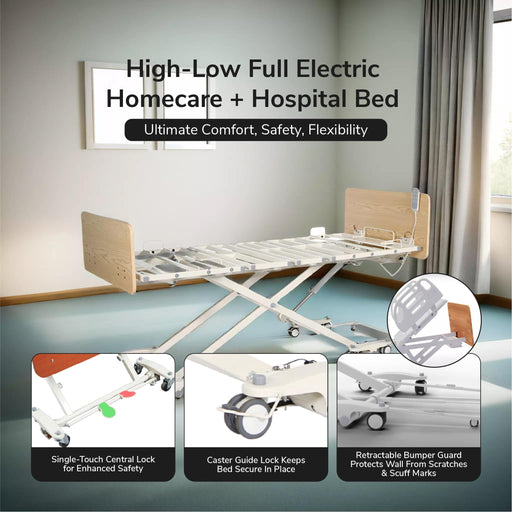
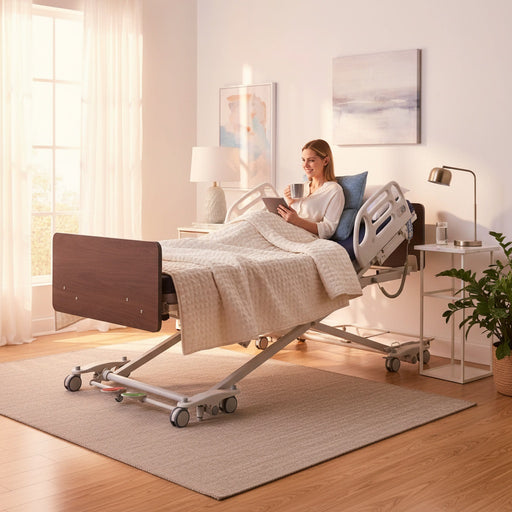
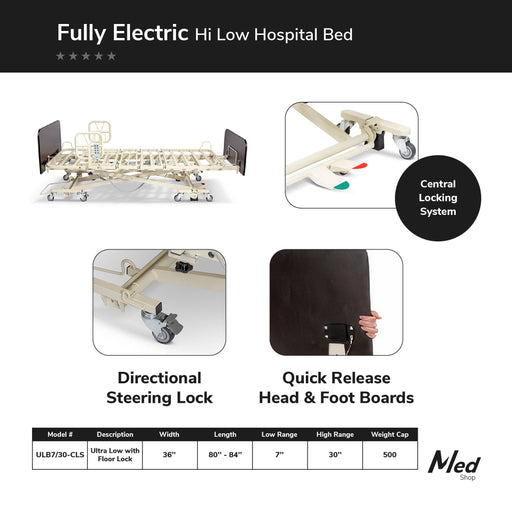
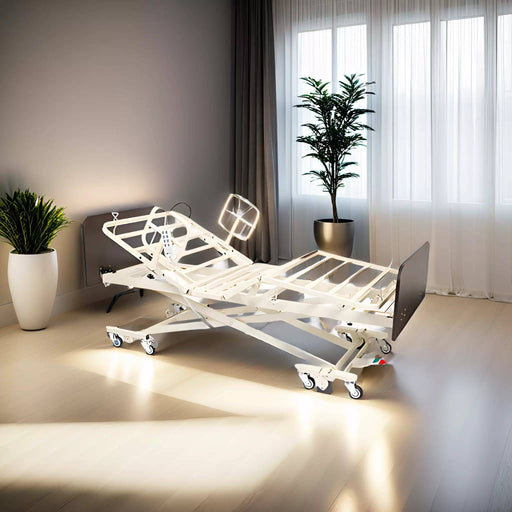


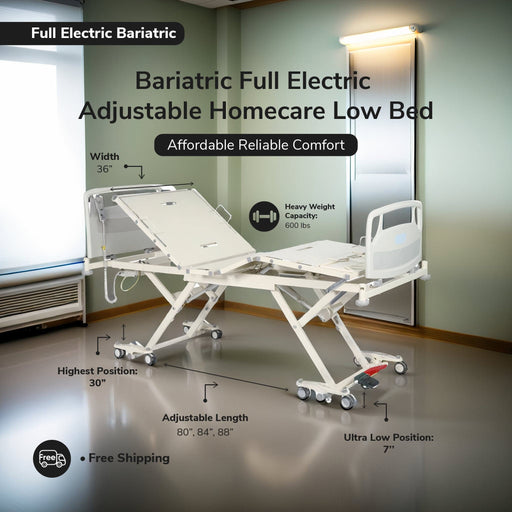
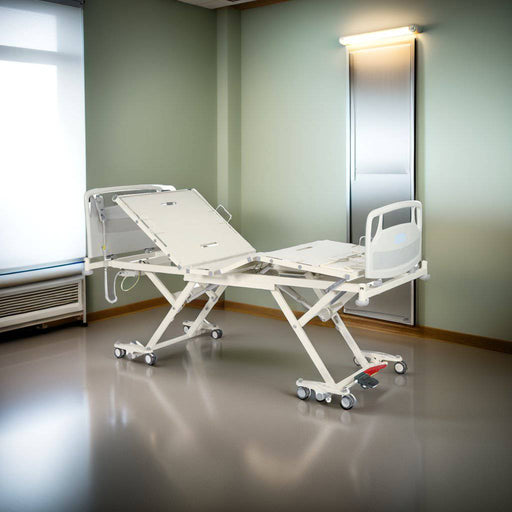
Leave a comment